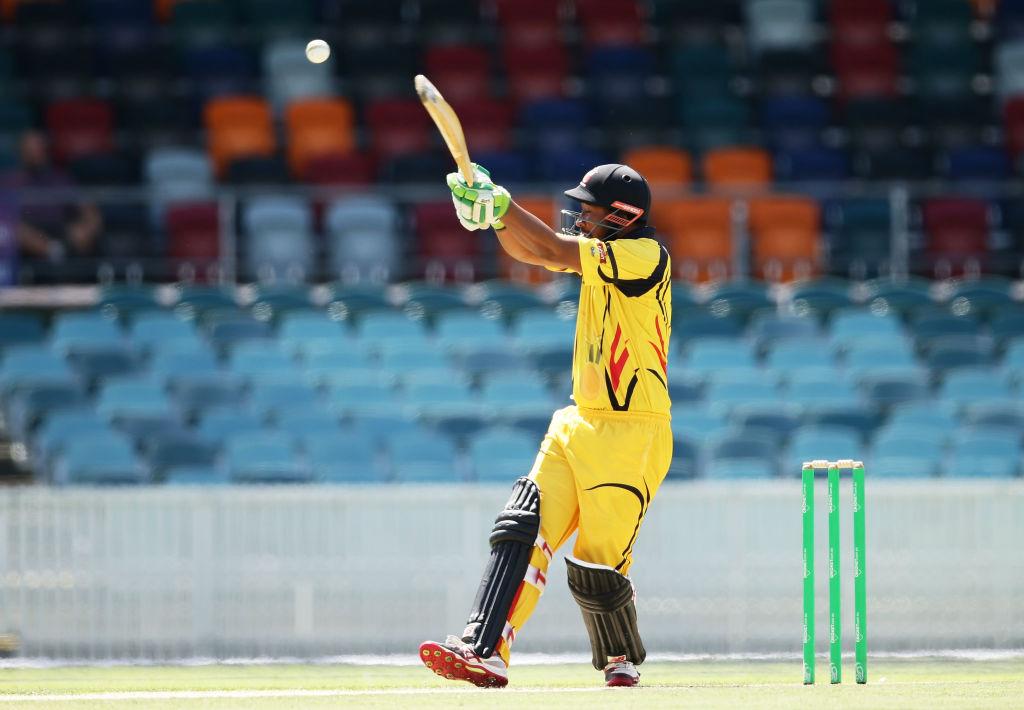Explained 16-team qualifiers for 2021 T20 World Cup
The International Cricket Council has announced that there would be a 16-team qualifier for the 2021 T20 World Cup. All you need to know - how does it work, where would it happen, who are the teams involved and what was the previous format - we have, in this article, ‘Explained’.

Eight teams in two groups will fight it out starting from the October 18 for just four places in the World Cup Super 12s. After the three-month-long qualifiers that took eight teams to Australia ahead of the mega-event, they will have to face each other in two groups, A and B, with four teams divided into each of them. While Group A consists of Ireland, Oman, Papua New Guinea and Sri Lanka, Group B includes the likes of Bangladesh, Namibia, Netherlands and Scotland.
“We worked through a number of options together with Members and we’re all strongly in favour of this approach which allows for both global and regional competitions on the pathway to the ICC Men’s T20 World Cup 2021,” confirmed ICC on the new approach.
So how did Sri Lanka end up in the qualifiers you may ask? Well, the answer is simple - they are outside the top eight spots in the ICC ranking, leaving them vulnerable to qualify for the tournament. However, the new system will ensure that there is a level field for teams across the globe, unlike the current one which was heavily influenced by Asian countries.
Who else is vulnerable for the Australian World Cup?
The other side which is recognised as a Test-playing nation in the two groups is Bangladesh. Yes, the side which has superstars such as Mustafizur Rahman, Mahmadullah, Tamim Iqbal and Mushfiqur Rahim. Yes, the same side that came close to beating India in the quarter-finals in 2016, before that famous Hardik Pandya over. After that, they have collapsed under the new format, leaving them in danger of missing out for the marquee event. However, they have been handed a favorable draw where they are to face the likes of Namibia, Netherlands and Scotland, which don’t get me wrong is not a big ask. If one of the two Asian sides fail to qualify, only one of them will go through next time around, thanks to the new rules.
What happens next?
Well, they qualify for the Super 12 and from then on, they will have to work their skins-off to get a result, bring their ‘A’ game against the top sides in Australia. If they do, the top two teams from group A and top two from group B. Group A’s leaders and Group B’s runners up will round up the Group 1 of the Super 12, while Group B’s leaders and Group A’s runners up will be part of the second group.
How does it change now?
The new format changes the dynamics, pretty dynamically too. It now has 16 teams vying for four spots, instead of the six fancy spots that were available to the teams previously. Thus eliminating the need of having another qualifier ahead of the World Cup. But, how are the teams going to qualify and how are the groups going to be made. Well, again, ICC’s devised plan makes an easy division.
What is the division?
Group A, in the new division, will consist of eight teams, from Asia, Europe, America, East Asia Pacific, and Africa. The division will be two top-ranked teams from the qualifiers in Asia, Europe and America making it six in the group. On the other hand, only the winners from East Asia Pacific and Africa would make it to the group of eight. From there, only two will qualify for the mega event in the Super 12.
How about the other teams?
Oh, the other teams will be split into eight again, four slots will be given to Zimbabwe, Nepal, UAE and Hong Kong while the other four will be from the four failed teams that qualified for the T20 Qualifiers in the 2020 tournament. With that, we would have a total of 16 teams for the tournament, making it structurally more viable. Two teams will qualify from thereon to the mega-event.
Now that it makes sense, tell me the split in detail?
Starting with Africa, the two highest-ranked teams in Africa as of 1 January 2020 will automatically qualify for the Africa final. Currently, the two highest-ranked teams in the continent are Kenya (25) and Nigeria (40).
In East Asia Pacific, participating teams will compete in one regional final, with the winner progressing to one of the global qualifiers. America, too, follows a similar pattern, with one regional final and one winner for the global qualifiers.
How about all the exciting teams from Europe and Asia?
The highest-ranked team in Europe as of January 1 2020 will automatically qualify for the Europe final, which is the 26th ranked Jersey side. The remaining teams will compete in one of the three regional finals. From there, six teams will qualify for the regional finals - a tournament that will cut down the six down to just two sides that will progress to the global qualifiers.
From Asia, however, participating teams will compete in one of two regional events. That means the winner of each regional event will progress to one of the global qualifiers.
When are these qualifiers going to happen?
The 11 qualifying events will take place between March and September 2020. And, further, the two eight-team global qualifiers, will take place between March and July 2021 before the mega event in India, which starts in October.
So are the 12 teams from 2020 World Cup safe?
Yes, the top 12 teams from this year’s T20 World Cup are safe and they would qualify for the next edition straight away. However, there is one change with next year’s tournament, which is there will be a total of 16 teams in the tournament. The 2021 tournament in India will replace the Champions Trophy, which has been scrapped by the ICC.
Who are the hosts of the 2021 T20 World Cup?
Well, India are the hosts of the 2021 T20 World Cup, and obviously will be the first team that qualifies for the tournament. The tournament replaces the Champions Trophy, with a 16-team tournament and will also be the first time that a back-to-back T20 World Cup would be held in the span of just one year starting October.

Comments
Sign up or log in to your account to leave comments and reactions
0 Comments